May 2023, Vol. 250, No. 5
Features
Worksite Safety: Defining Fundamental Drivers of Learning On-Site Procedures
By Perry Redman, Caterpillar, Inc.
(P&GJ) — Quick! How many rescue breaths should you administer after providing chest compressions to an unresponsive, non-breathing accident victim during CPR?
The American Red Cross recommends giving two breaths of about one second each before immediately returning to giving 30 chest compressions, with two hands centered on the chest at a depth of at least 2 inches at a rate of 100 to 120 compressions per minute.
We can reasonably agree that training is a critical element of any corporate safety management system. However, it is unlikely we can agree on how to understand or measure the student’s retention level of training materials.
Tests, quizzes and skill demonstrations prove the student has learned something from the training course. But for how long? Will the student be able to act upon this training six months from now? Will students be able to recall specific training in the event of an emergency?
A project led by the University of Colorado-Boulder’s Construction Safety Research Alliance, is studying this exact issue. The premise is that in contrast to rapid advancements in science and technology, training in general, and safety training in specific, has been slow to change.
By studying training from a scientific perspective, the team believes they can clearly define the fundamental drivers of adult learning and reimagine how training is delivered.
Training allows us to impart knowledge, improve skills and reinforce a safety culture. But we all learn and retain training differently. This challenges the abilities of the trainer and the training program to ensure students are prepared to properly identify – and act upon – their training when it is truly needed.
Thirty-one company representatives from the energy, pipeline infrastructure, marine and construction industry, along with five academics are working to bring together well-defined safety training content with new academic research in the science of adult learning.
Specifically, the team is exploring how time-tested strategies such as storytelling and humor pair with modern technologies like simulations, virtual/augmented reality and artificial intelligence to improve the learning and retention of safety related content.
With input from front-line employees and controlled experiments, the team will test how these potentially transformative methods of training affect the acquisition, retention, and application of new safety knowledge. This project is critical for equipping the next generation of workers with training that is purposely designed to be more effective, efficient and engaging.
Project Vision and Goals:
The project is focused on developing and validating an effective safety training framework that will:
- Identify key learning agents – the tools used to deliver the learning content
- Improve learning transfer/information acquisition
- Facilitate knowledge retention
- Define, create and document a safety training template that can be deployed over multiple training topics in the construction industry to enhance and improve student learning and retention
The project is designed to deliver recommendations on the following safety training program elements:
- Learning Environment: What is the optimal learning environment for workers and immediate supervision?
- Learning Content: How should content be designed and delivered for optimal knowledge transfer?
- Trainer: What tools and resources are needed for trainers to be successful? What does a successful trainer “look” like?
- Learner: How do we help workers and their supervision turn into better learners?
Initial Action:
The team first identified and then narrowed the key safety topics relevant to construction workers and their immediate supervision. These are the safety-related learning topics deemed to be of top relevance and importance to a company’s safety performance. These topics needed to include demonstrable skills that can be measured, however, experimentally they may not be assessable.
Five key safety topics were identified as critical to the safety learning portfolio and include:
1) Being able to recognize the job site hazards that might affect the student and the crew.
2) Determining what controls are in place to manage job site risks? Can the student identify them and recognize their absence?
3) Making sure safe work plans are identified and clearly communicated for the project, as well as for the task at hand.
4) Identifying roles and responsibilities in a way that is understood for the project and the day’s work? Does the student understand the impact they have on themselves and their crew if they do not understand and act on their own roles and responsibilities?
5) Knowing how to respond to job site or work procedure changes and emergencies.
Next, the team worked to identify the learning objectives for any safety training. These detail what is expected from the student.
While not exhaustive, the team identified and then narrowed eight learning objectives that are considered important outcomes of any safety related learning program.
Learnings To Date:
The team surveyed over 200 construction workers and immediate supervision about what they liked – and didn’t like – concerning the training in general and safety training in specific.
Workers like:
Hands-on, engaging and on-the-jobsite training
Knowledgeable and experienced trainers
Workers don’t like:
Presentations without hands-on engagement
Non-interactive/online-based training
Out-of-date materials and training techniques
The team also surveyed 190 safety training professionals about what they found most effective in training workers and immediate supervision/foremen:
- Effective training techniques
- Discussion, storytelling and hands-on are the most engaging training methods
- Demonstrate positive attitudes on new technologies
- Content depth needs to balance practical vs competency
- Training templates help create the safety training climate, but execution creates the safety culture
- Training challenges:
- Keeping every trainee engaged
- Training experienced workers
- Keeping trainees focused
Next Steps:
After the team has outlined the key safety training topics, and then the objectives of each of the training topics, the research can begin to:
- Collect data on effective training tools or learning agents to deliver the content
- Evaluate effective delivery mechanisms for the learning agents such as virtual or face-to-face training
- Determination of the tools and resources needed to ensure effective trainers
- Compile and disseminate the analysis, findings and recommendations.
The team is now working in parallel to define and draft experiments to test student acceptance, understanding and retention of safety training content. This includes an academic review of critical literature and content related to adult learning in an industrial environment. These elements will all feed into the development of the safety training framework.
Work is underway to identify the research questions that need to be answered to seek and narrow effective learning delivery tools – the learning agents. The research questions will guide the team of researchers to evaluate literature and academic materials for identifying potential knowledge transfer mechanisms/learning agents.
This list of potential learning agents will then be tested from a scientific perspective in field and lab-based research to evaluate each learning agent’s effectiveness in respect to each safety training topic.
Through in-field and lab-based training the research team will evaluate the multiple learning agent’s effectiveness versus a control group. Here, the control group will be delivered a safety training content or program using current industry accepted learning agents (text book, in-class program, etc.) with testing administered after completion of the session and then again at predetermined intervals to measure knowledge retention.
Separately, the experimental groups will utilize new learning agents to deliver related content to the other worker and foremen groups. Again, knowledge testing will be administered at the end of the session and then again at predetermined intervals to compare retention.
Project Timeline:
The project will present its findings on potential learning agents in early November with lab and in-field testing scheduled to start February 2023. The project deliverables are planned to be released at the end of 2023.
Who Is CSRA?
CRSA is a partnership of industry leaders and experienced scientists, focused on construction safety research. It uses scientific data-driven methods to create defendable and reliable construction safety knowledge with an open-source, results-sharing strategy.
Breakout:
Completed CSRA projects:
- Quality of safety leading indicators: The project worked to create a precise, accurate, and reliable protocol for assessing the quality with which safety management systems (safety leading indicators) are implemented.
- Tyranny of TRIR: Our industry has been using total recordable injury rate (TRIR) for nearly half a century to compare safety performance of entities, but to what extent is it statistically valid? This project reviewed the use and interpretation of TRIR metrics in our industry and validated its ability to predict safety performance.
- Predictive analytics: Is it possible to identify the business factors, work characteristics, and crew demographics that best predict serious injury and fatality incidents? This project evaluated and recommended potential predictors of safety performance and produced a dashboard enabling an objective and dynamic method to assess SIF risks.
- Incident Investigation: Learning from incidents is vital in aiding organizations in the elimination of Serious Injuries and Fatalities (SIFs). Most incident investigation resources focus on the analysis of data collected, often with a presumption that the information collected is itself of high quality – but that is not always the case. The project worked to determine what happened and why, highlighting any causal factors that led to the incident. This approach enables organizations to learn from incidents and make appropriate changes to ensure they won’t happen again.
Author: Perry Redman is manager of North American Corporate Pipeline Accounts for Caterpillar, an associate member of the APCA, a member of the APCA Safety Committee and multiple other global pipeline safety committees. He is based in Houston, Texas, and is working with CSRA as Co-Chair of the Science of Safety Training project and as a member of the Predictive Analytics team.



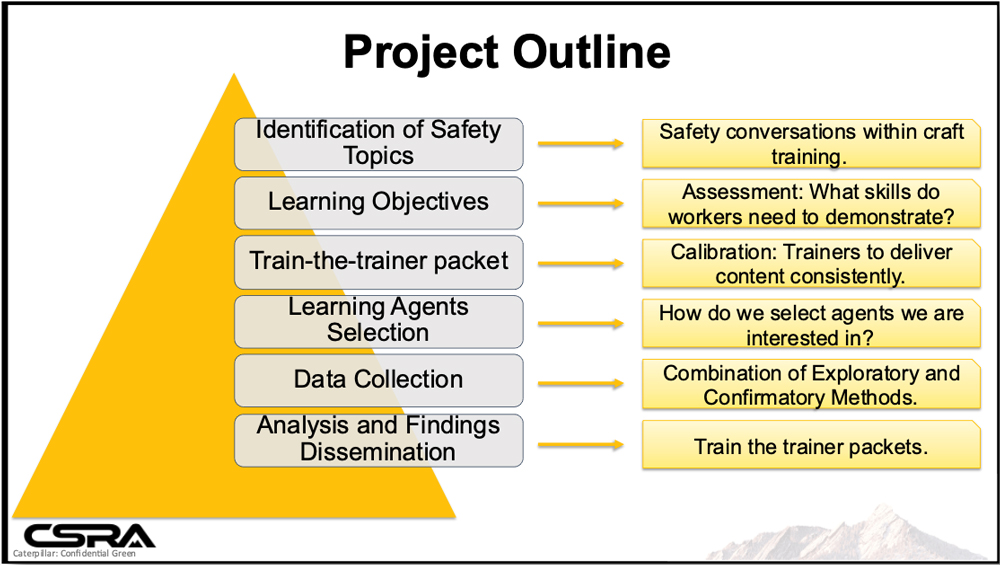
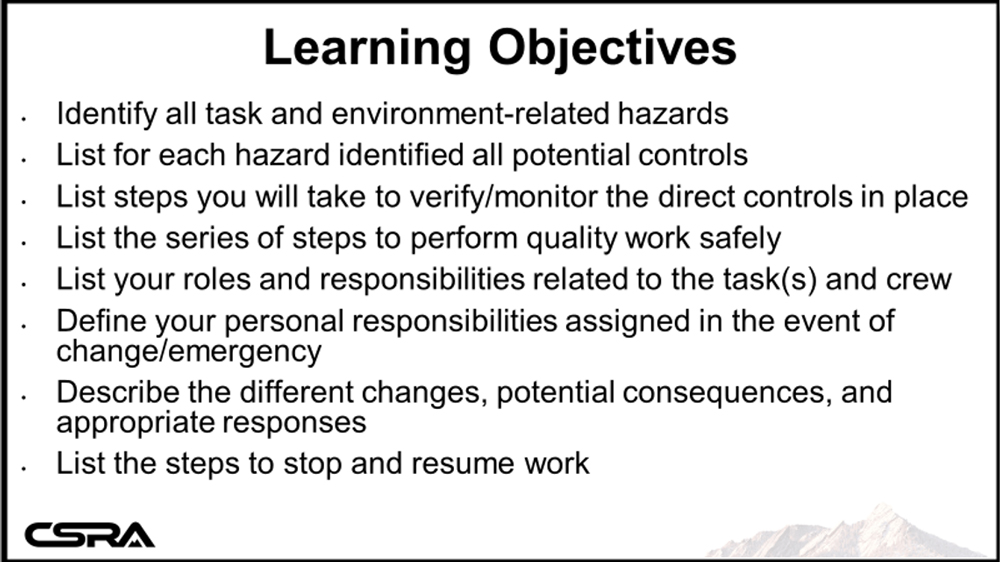
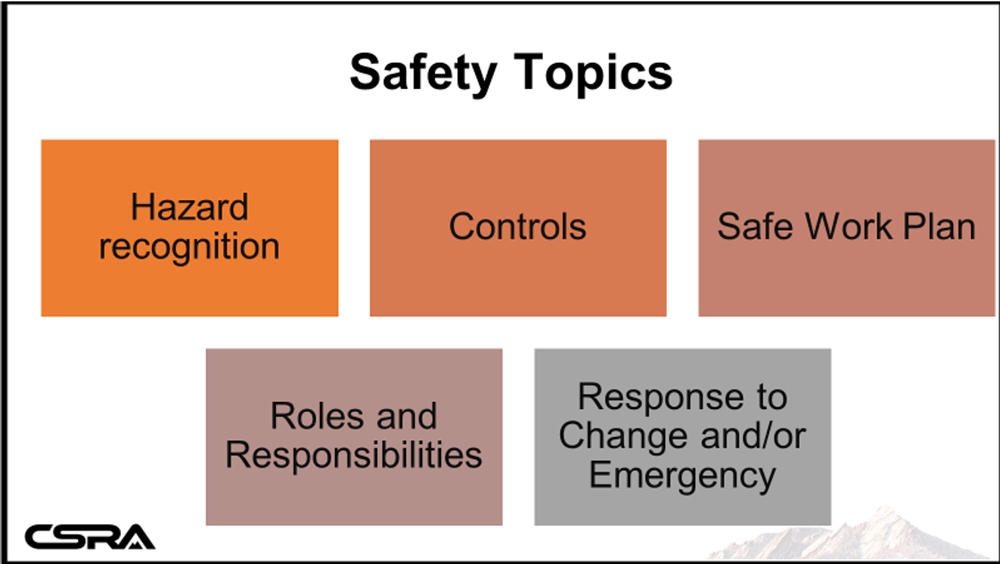
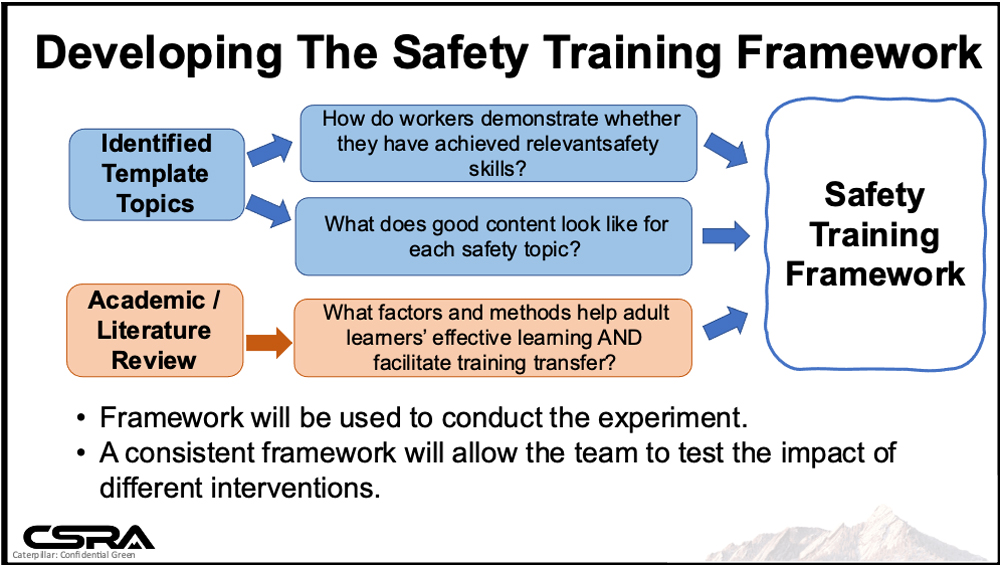
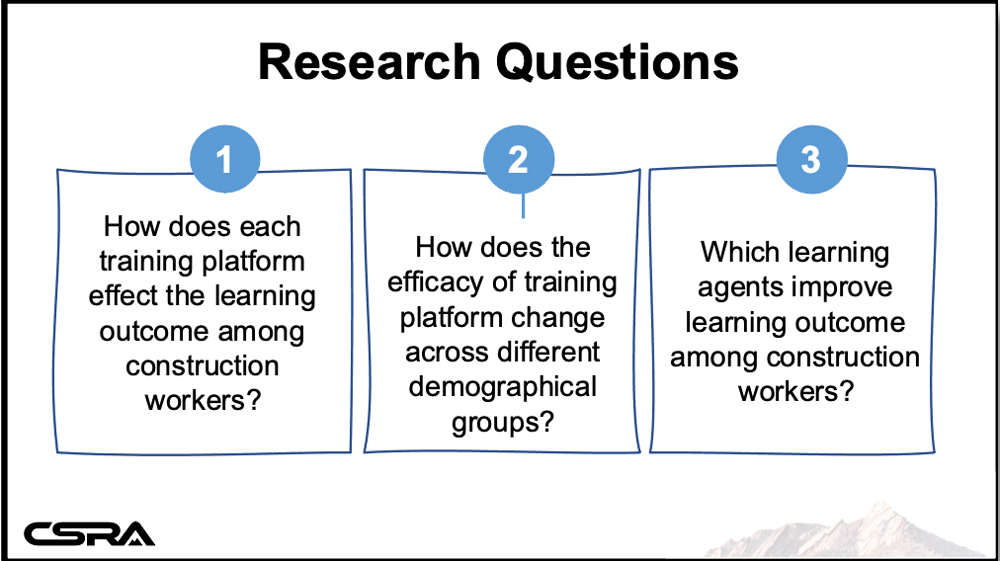



Comments